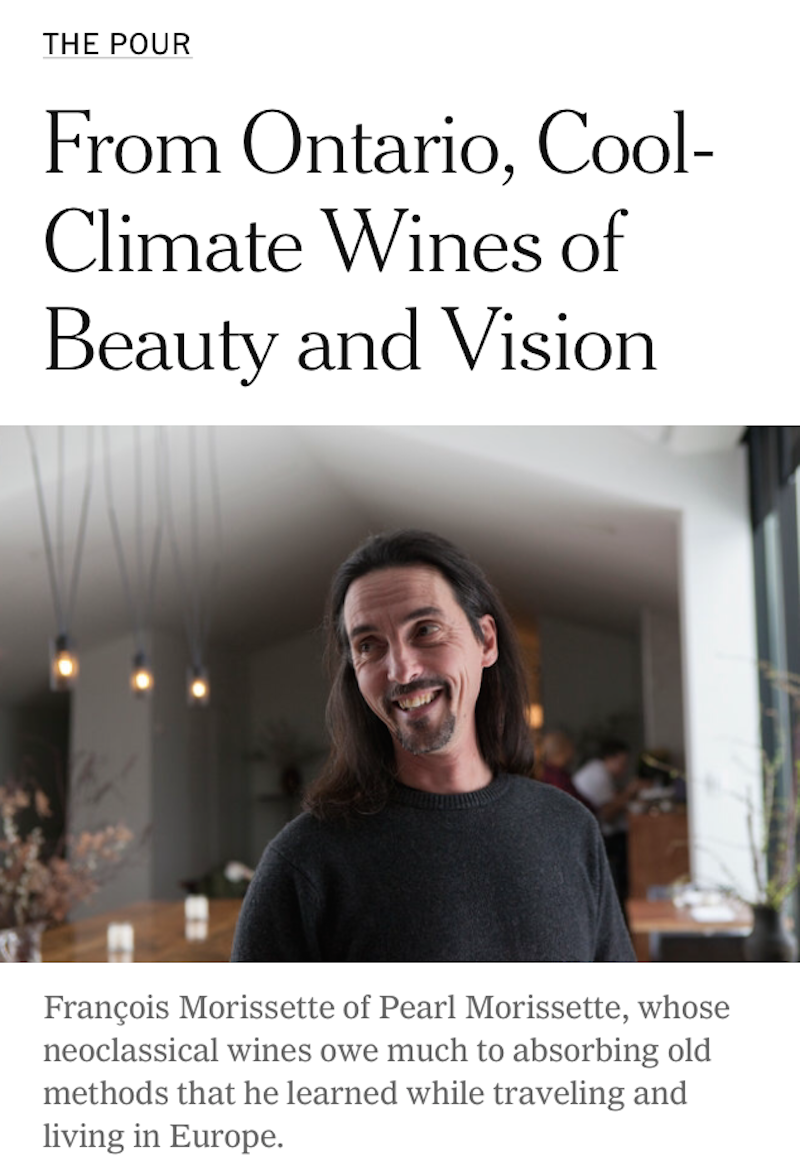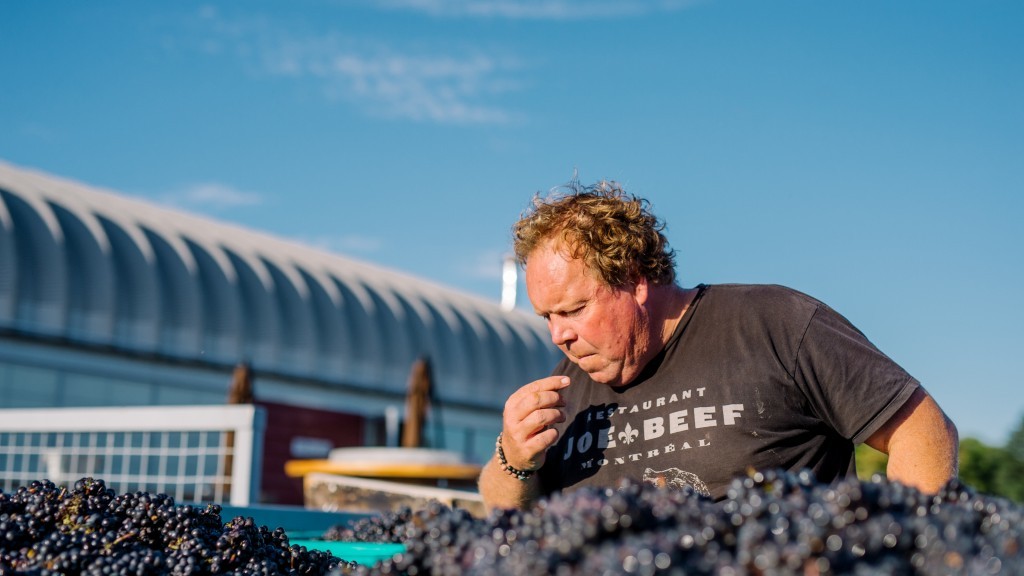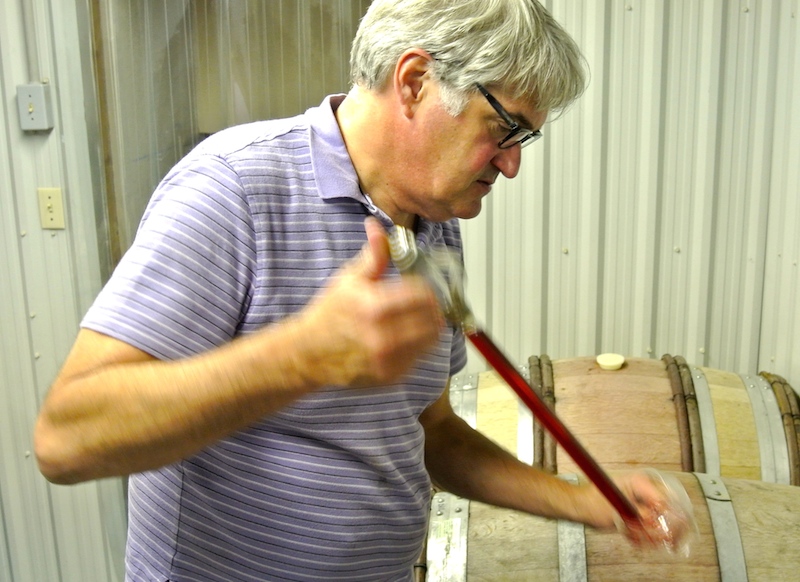
By Rick VanSickle
The headline was full of promise: ‘From Ontario, Cool-Climate Wines of Beauty and Vision.’ And it didn’t disappoint.
It was a gushing, eloquently written treasure trove of flattery for a handful of Ontario wineries carrying the torch for an industry starving for recognition outside its own borders. And, perhaps even more importantly, it was written by one of the world’s most influential wine writers for one of the world’s most influential newspapers in the world’s most important wine city.
The trifecta: Eric Asimov. The New York Times. New York.

To call it a coup that Asimov chose to venture north of the border and independently seek out a few pre-determined winemakers to focus his first story on Ontario wines is an understatement. When the piece was published Jan. 16 you could almost hear the Chardonnay corks popping from Niagara to Prince Edward County. It was such a glowing and positive report on the wines — mostly focused on Pearl Morissette with a little Norman Hardie, Tawse and Thomas Bachelder tossed in for good measure — that it would be easy to overlook some elements of the story that seemed blatantly out of place and gratuitous in many ways. But not only that, they appeared absolutely unsupported by fact or reason.
It is this tiny part of the story that ignited a firestorm — and much passionate debate — with so many in the Ontario wine industry:
“Beyond the small group of top producers, a lot of wine is made on the Niagara Peninsula,” wrote Asimov. “Much of it, alas, is workmanlike stuff to sell to the many tourists who come in the summer to visit the lake and Niagara Falls.”

Asimov then quoted winemaker Thomas Bachelder to back that statement up:
“Producing plonk for Niagara bus tours, that’s the biggest problem, not the cold,” Bachelder was quoted as saying.
What? That makes no sense whatsoever.
Here’s the thing. Bachelder didn’t say it. I spoke to him and I am confident that is not his quote. That’s not Bachelder, who has always played the role of team builder in Niagara. Who it is, I do not know. I did write to Asimov to ask him if perhaps he confused Bachelder with someone else he talked to, or perhaps wrote the quote down incorrectly, but was told in a reply email that what he wrote “was Bachelder’s opinion.” Not exactly what I asked, but that was his response.

The gist of the quote, wherever it came from, is built into the story to give it balance to all the glorious words piled on the wineries Asimov chose to focus on. He needed the quote to back up an observation he made, on his quick, first visit to the region, that, beyond those few wineries, the majority of wines made in Ontario is “workmanlike stuff” made to sell to “tourists who come in the summer to visit the lake and Niagara Falls.”
It’s a common tool in journalism. Write a declarative sentence, cobbled together from what you think you know, then get someone to qualify it with a quote. It then becomes real. Except when the qualifying quote isn’t real, then it isn’t. It’s wrong.
The quote attributed to Bachelder — “Producing plonk for Niagara bus tours, that’s the biggest problem, not the cold” — is bizarre, to say the least. Bus tours are a fact of life for any successful wine region. They bring people to the winery … to buy Niagara wine, I would assume GOOD Niagara wine … to eat GOOD Niagara food … to spend money in Niagara. That people want to travel to Ontario and get in those buses and go to Ontario wineries is a good thing, not a negative.

Making “plonk” specifically for those tourists seems silly and far-fetched to me, unless you have a really flawed approach to running your winery. No one sets out to make “plonk” for tourists who really only came to “visit the lake.”
And what is plonk anyway? Everything that Morissette, Tawse, Bachelder and Hardie don’t make?
I once helped a well-known Canadian wine collector stock his wine cellar that was teeming with first growth Bordeaux and Napa cult wines with his first bottles of Niagara vino. He flew into Niagara in his private jet and arranged with me to taste through a pile of top Niagara wines that I had chosen. When it came to the Cabernet Francs, something that happens to do very well in Niagara, he simply dismissed them all because his pals would view Cab Franc as the third blender in a classified Bordeaux, not a standalone wine. To him, without even tasting it, it was plonk.
Plonk is in the eye, or this case, the mouth, of the beholder.

And, let’s face it, there is plenty of plonk to go around in Niagara, just like any wine region on the planet.
Point is, not even Asimov can dismiss EVERYTHING that he did not taste in Niagara as plonk. That’s just wrong. But that is the impression he left with so many.
‘I believe pride in our industry
is our biggest strength’
On various Facebook pages the debate over the Asimov story raged for days.
Vineland Estates winemaker Brian Schmidt’s Facebook page received the bulk of comments after the Asimov story was published. Here’s what he said on his Facebook page:
“I am thrilled that Eric Asimov has taken the opportunity to ‘shine a light’ onto Ontario wines. The four wineries mentioned produce excellent wine and deserve to be recognized. However, for Thomas to suggest that producing ‘plonk for bus tours is our biggest problem’ is deeply disrespectful to the vast majority of growers, producers and adjunct businesses … this comment fails to recognize that our region (like all others) functions as an ecosystem. We all benefit from each other in one way or another.
The success of our region is NOT a function of a small handful of wineries producing ‘ultra premium wines.’ We are successful because ‘BUS LOADS’ of people have been compelled to visit OUR Ontario wine regions.
We are successful because a budget conscious consumer has enjoyed a $15 Riesling or Chardonnay or Cab Franc (or many other wines) produced from 100% Ontario grown grapes. Once convinced of the price/quality we offer they will begin to explore other, more expensive wines produced by our talented winemakers.
We are successful because an amazing chef has prepared a locally inspired dish to be paired with an Ontario wine.
We are successful because we passionately support and encourage each other to continually evolve our skills.
We are successful because we LOVE what we do!!”
Schmidt said in a later interview that he felt compelled to defend Niagara and all the wineries that were maligned in the article’s broad-stroke approach.
“I believe pride in our industry is our biggest strength,” he said. “If anyone takes a swipe at Ontario wines, regardless of who they are, I am going to defend Ontario wines. It’s a function of maturity.”
Chateau des Charmes marketing director Michele Bosc also lashed out at the story.
“It’s a fine line between a financially viable business and pursuit of excellence at all costs. Many folks forget that in the ’90s the market was minuscule for locally produced wines. Thanks to tourism initiatives we have grabbed the hearts and minds of consumers and made raging fans of some. Tourism is our lifeblood and where our businesses make a profit. For our family there is no plan B, we didn’t make a ton of money in another industry then invest it here. The Niagara wine industry is our life. Our business decisions affect the lives of 90 other families. We do take the quality of our wines extremely seriously. But we need to make financially sound decisions to remain viable. That’s the part of the equation that’s often forgotten in these discussions. Yeah it’s about the wine but it’s also about business and the people.”
Burning Kiln winemaker Lydia Tomek added this:
“This can’t be seriously how Ontario wine makes the N.Y. Times? They obviously have no idea what it takes to pay the bills and make wine in one of the most challenging but beautiful wine regions that has to function in a wineopoly. I would just like to add that if it wasn’t for plonk wineries selling affordable wine, bringing in tourists, paying growers, and being able to pay their own bills as a functioning business, wine brands like Le Clos Jordan would have never been created let alone last a vintage.”
I do not believe that the Niagara wine industry is so starved for publicity that it would turn a blind eye to something it would find inaccurate or unnecessarily unfair even if the writer is from the New York Times, and even if the offending passage seems tiny and insignificant.
And judging by the comments posted on various social media platforms, Niagara is well past that point.





Comment here